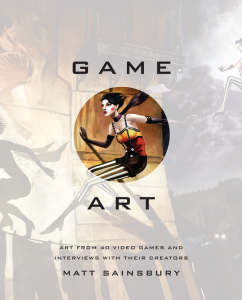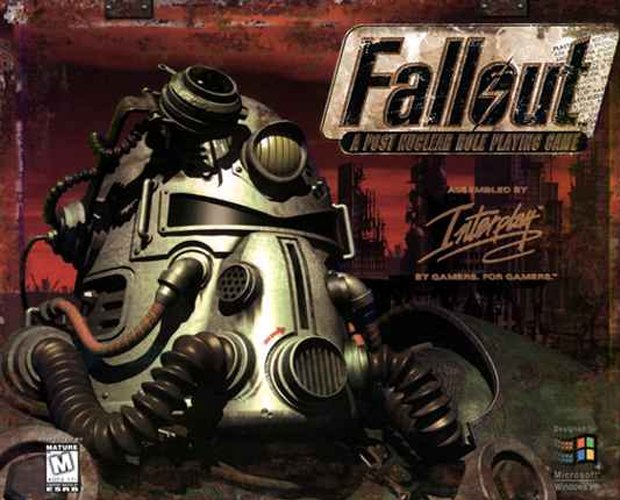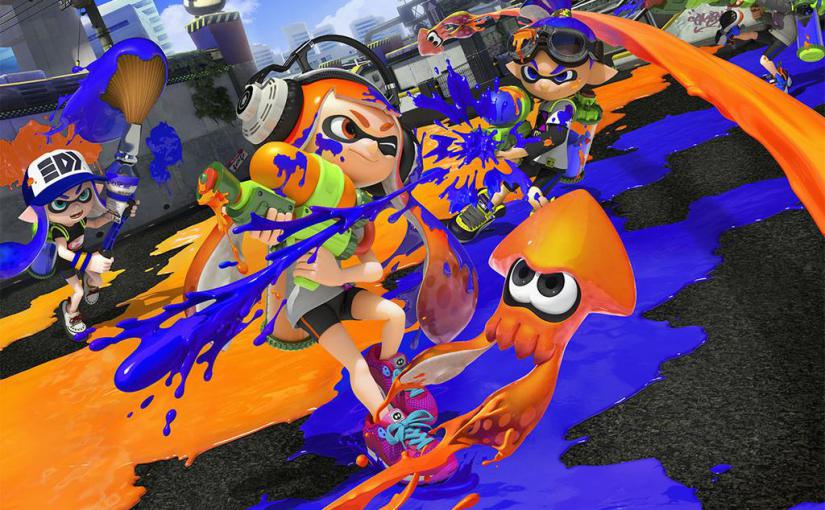I wrote recently about one of the few true ethical dilemmas I found myself having to navigate in Fallout 4. It was a satisfying moment, if only because I couldn’t be satisfied. For the first time (at least, the first time that I noticed) I was not able to do things my way. And that was a good thing. The decided lack of satisfaction was more satisfying than the go-anywhere/do-anything open world had yet been. There was a beauty in the fact that this situation wasn’t as simple as I’d like it to be.
And, as I mentioned briefly in that earlier piece, it was accidental. This wasn’t an ethical conflict by design, like my Necropolis example from the original Fallout. No, this was a conflict born of circumstance. A few speech checks failed, against all odds. I’d sided with a certain faction that made the situation less straight forward. And I’d invested time (in-game) and empathy (personally) with The Minutemen, the group of interlopers that became my eventual sacrifice to the greater good.
Had any of those things been different, there wouldn’t have been an issue. I could have gotten, in theory at least, what I wanted, as I wanted to get it. I said all that before. But here’s the one additional complication I want to spotlight here, where I can give it a larger discussion: I was playing the game as a good guy.
Fallout 4 ditches the karma system from previous games, and that’s good, because it was never totally compatible with Bethesda’s approach to the franchise anyway. It was also an oddly cosmic concept for games that are otherwise fairly down to earth. Sure, killing an unarmed stranger in a remote corner of the map is a bad thing to do, but if nobody saw you do it, why do people you meet later treat you like a monster? The game knows you did something bad, but the other characters shouldn’t. (And don’t even get me started on the needless complications of New Vegas and its various faction reputations. A great idea in theory. A distracting and irrelevant mess on execution.)
People have given Fallout 4 guff for scrapping karma, but that was unquestionably a simplification in the right direction. It wasn’t an act of creative laziness…it was a recognition of the fact that the system never did was it was supposed to do anyway, and so instead of spinning out scripts and quests for various karmic branches, the designers streamlined the game and let players play in their own ways. Whatever one may think of this game’s particular execution of that simplification, that’s up for discussion. But the fact that it was simplified is a good thing.
Here’s the main reason that simplification was needed: in spite of the lip service paid to choice, you’re supposed to play these games as a good guy. That’s how the games are written, that’s how the games are designed, and that’s the only way they actually work.
This is especially apparent in Fallout 3‘s narrative arc. Spoilers, yes.
In Fallout 3, you are a character who sees for the first time — along with the player — the lengths to which people will go in order to survive in the Wasteland. It starts from the very beginning, in Vault 101, where a small community survives by shutting itself off from the dangers of the outside world. Importantly, the same metal door that keeps its residents safe inside strands others in danger, outside. When you enter the Wasteland early in the game, you see the skeletons of those who sought the safety of Vault 101, only to be turned away. Some of their signs remain, which they presumably held up to the security camera to convey the urgency of their plight. One says, “Help us.” Another reads, “We’re dying, assholes!”
They died there, inches from salvation because a conscious choice was made not to give it to them. Arguments could be made either way as far as “the right decision” goes, but there’s one central fact: Vault 101 was safe, and in order to remain safe it refused that safety to all others. They may have done the right thing…but they’re still assholes. It’s your earliest example of survival at all costs, and it’s one of the least cruel.
Throughout the game you meet murderers. Slavers. Cannibals. Raiders. Madmen. And every so often you encounter a little town…and steel yourself for the inevitable disappointment, the (often literal) skeletons in the closet. Some folks might be closer than others to living an ethical life, but they’re never more than one stolen item or threatening gesture away from pulling out a gun and killing somebody.
In the Wasteland, it’s kill or be killed. I understand that. The game is designed to convince us of that at every point, with every settlement we encounter, with every disemboweled corpse we stumble over, with every ironic reminder of just how far and how quickly civilization fell. You need to be the biggest and most dangerous fish in the (glowing) sea if you want to survive…and even then, an angry enough smaller fish can take you down. Nobody is safe. Nobody is secure. Everybody is on edge, and nobody is more than one wrong move away from having their life taken away.
Then you meet your father, James.
The search for your father is the main driving force of the first part of the game. He escaped Vault 101 shortly before you did. He never said goodbye. You don’t know where he is. You’re thrust into the Wasteland less experienced and less prepared than he is, but you need to find him. And as you scrounge for clues in and around post-war D.C., you learn something important:
He’s not an asshole.
James fled the vault and put himself in danger — two significant opposites to the behavior of almost everybody else you meet in the game — in order to assist with Project Purity, an ambitious experiment to provide clean drinking water to the residents of the Capital Wasteland.
All of them.
Every one of them.
The murderers, the slavers, the cannibals, the raiders, the madmen. The enemy.
Why?
Because among those, there are children. There are good-hearted people mired through no fault of their own in a life of violence and mistrust. There’s potential. There’s humanity out there, somewhere, even if neither you nor James ever really finds it, or at least there’s a chance that it exists…and James puts himself in mortal danger for the chance to keep it alive.
And he doesn’t just speak about idealism; he lives by it, and eventually dies by it.
If the first part of the game revolves around finding James, the second part revolves around helping him. Together you work to get Project Purity online. There are a series of small tasks that need doing…nothing at all compared to the Super Mutants and Death Claws you’ve fought to make it this far. If anything, this is easy. It’s a reward for having overcome so much. All you need to do is turn a few valves here, flip some switches there…
…until the project is interrupted by The Enclave.
The Enclave are Fallout 3‘s clear bad guys. They’re the very well armed and fairly well organized remnants of the U.S. Government, pumping propaganda through one of the few surviving radio stations while they gun down anyone they view as a threat to their authority…which is just about everybody.
They demand control of Project Purity. James doesn’t give it to them. They threaten to kill him. James beats them to the punch; he releases a flood of radiation into the room to kill the Enclave’s commanding officer…and, because there was no avoiding it, himself.
It was the only way to save the project.
Everybody else in the Wasteland does anything it takes to stay alive. James — your father — realizes that there’s a goal much more important and much larger than the survival of one man. In a world of selfishness, James is willing to sacrifice.
It’s a powerful moment, and probably the single most important thing that happens in Fallout 3.
The third part of the game is you following in your father’s footsteps…and it ends with you, too, sacrificing yourself for the good of the Wasteland.*
That is the arc of the game. And though you can choose not to sacrifice yourself, and to play the game as an evil character, that doesn’t change the emotional journey of the game…it just renders it irrelevant. You’re supposed to play it this way, but you can choose to play it some other way. Should you do that, though, Fallout 3 loses its entire ethical framework. You’re left with a game in which you can kill people and fight monsters and scrounge for cool weapons, but that’s any game. Fallout 3 relies on its story as its identity, and it’s a good one…but that story only has meaning if you’re good, too.
You can’t blame Fallout 3 for being weighted toward good characters. Those, after all, are the only ones who can face ethical dilemma. Being called an asshole only matters if you aren’t actually an asshole. It only hurts if you’re trying not to be an asshole. “Asshole” only has meaning, that is to say, when you’re working really damned hard to be an asshole’s opposite.
And when Fallout 4** came out, the lack of a karma system made sense. Only by treating the character the same — regardless of what his or her past actions were — could it force all players into a single, coherent story, as opposed to one in which some stuff happened while you were out murdering innocents.
Only “good” characters can face ethical dilemmas because only “good” characters can feel conflicted.
Whether it’s a situation like the one I described recruiting a scientist for The Institute — which is a dilemma that must be faced in the moment — or a situation in which the ethical “right” answer had the logistical “wrong” result, only a “good” character would care.
A “bad” character lies, steals, and kills to get what he or she wants. Unintended consequences (or…erm…”fallout”) don’t mean anything. How could they? You were perfectly willing to spill blood. Spilling more blood, however unexpected that extra blood may have been, doesn’t challenge your ethics. You overrode those before you set the gory dominoes into motion. You chose to be an asshole; revealing yourself to be a bigger asshole does not add retroactive meaning to your actions.
Good characters face ethical crises when things go from bad to worse, or when good intentions result in terrible outcomes. Bad characters could, in theory, face an ethical crisis if their intended bad behavior led to a good outcome, but it’s hard to imagine what that might be, as it’d have to be something that both that player and “good” players recognize as a good outcome.
It’s difficult to think of examples. Perhaps by robbing a bank you’d unwittingly cause a customer to realize how short life is, and he’d run out and build an orphanage, but that’s a tortured example, and I’m pretty sure most of them would have to be.
I’m open to suggestions on how something like this might work, but it’s safe to say that Fallout 3 wasn’t interested in those possibilities. All of its crises are built around “good” behavior. “Bad” behavior leads to a few unique situations, quests, and items, but nothing at all by way of ethical crisis. Play as a “good” character, though, and you get them one right after another.
Here are a few of the ethical shitstorms I had to face in Fallout 3…two of which were scripted, and one of which was naturally occurring by virtue of the game’s strong ethical throughline:
– Upon arriving in Megaton, a large and fairly secure community, I’m approached by a man who offers to pay me handsomely to destroy the town by detonating a bomb at its center. I refuse the offer, and tell the sheriff — a good man named Lucas Simms who keeps the residents under his watch completely safe — and the sheriff confronts the man…who shoots him and kills him, and strolls off without consequence. Ethically the right decision, logistically the worst outcome.
– I discover Tenpenny Tower, a secure high-rise catering to the relative upper crust of the Wasteland. They don’t allow ghouls — highly irradiated humans with a zombie-like appearance — inside. One ghoul is fed up with it, and plans to attack Tenpenny Tower to give his people a secure place to live. I convince him to back down, and diplomatically convince Tenpenny Tower to voluntarily let them move in. Things are great…until I come back and find that the revolutionary ghoul who wanted in has murdered all of the non-ghoul residents over a perceived slight. Ethically the right decision, logistically the worst outcome.
– There’s a shanty village called Arefu. The residents don’t leave their homes because they’re afraid of a gang of humans who drink blood. I find the gang and convince them to stop terrorizing the residents of Arefu. Now those innocent townsfolk can wander outside their homes again. They thank me, because for the first time in a long time, they feel safe. I return a few days later to find that a radscorpion has made it into town, and it kills the residents one by one while I try to take it down. There are no survivors…but there would have been lots, if I hadn’t convinced them it was safe to go outdoors. Ethically the right decision, logistically the worst outcome.
But those are all from Fallout 3. I could throw in plenty more from the original Fallout. (I haven’t played Fallout 2 enough to say much about that one.) Fallout 4 had…almost nothing. It was a game of choice instead of one of dilemma. It was a game of physical conflict as opposed to psychological conflict.
And I wonder if that’s because it is so difficult to craft ethical dilemma in open world games. Fallout 3 did it if you ask me…but I played the game as a “good” character. I’ve had others tell me that the story was “barely there” in that game. Invariably, they also happened to play as “bad” characters.
Maybe in Fallout 4 the emphasis switched to gunfire over careful thinking, and ethical dilemma wasn’t a natural fit for that, so the developers discarded it. Or maybe the developers realized that well-thought-out ethical dilemmas would be completely missed by at least half of the people playing the game, and therefore emphasized gunfire over careful thinking.
Either is possible, and both are disappointing.
The problem in Fallout 3 — and to a far lesser extent New Vegas — was that playing as a bad character removed all ethical obstacles from the playing field. Fallout 4 made the decision to treat everyone, instead, like a neutral character. People could do bad things without consequence, and do good things without complication. They were neither proud nor disappointed at being called assholes, because the game featured no characters who would call them one.
A simplification was the right decision, but logistically it had the worst outcome.
—–
* I’m ignoring the Broken Steel DLC, which idiotically resurrects you and says, “Hey, go kill more things.” It’s a pretty substantial narrative fuck-you, brought about by one of the worst trends in modern gaming: asking players to pay several times for the same experience.
** New Vegas is barely being touched here because that game was handled by another developer, and was more tailored — by design — to the player’s ethical compass of choice. The theme of the game is less “living up to your father’s legacy” and more “shaping the world in your own image.” It’s a joyously selfish experience, so I’m leaving it out because it’s irrelevant, and not because I think it isn’t worthy of discussion. On the subject of ethics, though? I sure did kill folks for their Sunset Sarsaparilla Star bottlecaps. And when I finally had enough to redeem, I had my ethical shitstorm itch firmly and deeply scratched.







